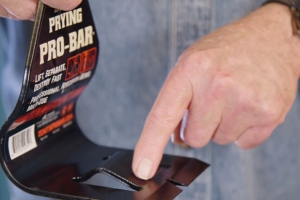Timing is Key - Learn When to Plant Grass Seed for a Successful Lawn

When is the Right Time for Growing a Greener Lawn?
A lush green lawn is a sight to behold, and every homeowner dreams of having one! But the secret to a successful lawn seeding lies in the timing. Knowing when to plant grass seed and what type of grass you need can make all the difference between a beautiful lawn and a patchy one.
In this blog, I’ll explain when to plant grass seed for optimal growth and discuss the factors that affect lawn seeding, and how to prepare your soil for planting. Last but not least. I will share tips on maintaining your lawn for long-lasting results. Get ready to have the best-looking lawn on the block!
Understanding When to Plant Grass Seed
In general, there are two main seeding seasons for lawns: spring and fall. But, how do you pick Spring or Fall?
The answer is well, it depends. Timing is a key factor in the successful seeding of grass. Before planting, it is important to understand your geographic location and the type of grass that grows best in your area. The ideal time to plant varies depending on temperature and weather conditions, as well as the amount of sunlight and shade your lawn will receive throughout the day.
Best Time of Year for Lawn Seeding
Fall is generally considered the best time to seed a lawn when there's less competition from weeds. Spring can also be a good time for seeding, but it should be done early enough to allow the grass to establish itself before the summer heat arrives. It's not advisable to seed during summer months as high temperatures and drought conditions can make it difficult for grass to germinate and grow.
Also important to note is the specific climate and region you are in when choosing the best time for lawn seeding. Things to consider for successful lawn seeding include proper preparation of the soil and correct watering techniques. Properly preparing your soil helps ensure that your seeds will have enough nutrients to grow, while correct watering techniques help keep your seeds hydrated without drowning them.
Advantages of Fall Seeding
When it comes to lawn seeding, the best time of year for most climates is in the fall. During this season, the soil is still warm from summer temperatures, but the air is cooler and more conducive to grass growth. Fall seeding allows grass to establish strong roots before winter dormancy and provides a head start for spring growth. If you are planning to seed in the fall, you’ll want to know more about how to properly care for your lawn in the fall.
Also to note is that fall seeding can help prevent weed growth and reduce the need for herbicides in the spring.
Taking advantage of fall's generally cooler temperature conditions can greatly increase your chances of a successful lawn seeding and a beautiful lawn year-round.
Spring Seeding Considerations
Spring seeding is typically done when the soil has warmed up after the winter frost and is no longer frozen. Spring is typically the second-best time to seed a lawn, with the ideal window being early spring when soil temperatures are consistently above 50°F (10°C). This allows the grass seeds to germinate and establish before the heat of summer arrives. However, spring seeding can be challenging as the weather can be unpredictable, and there may be competition with weeds.
Just like in the fall, if you are planting in the Spring, you’ll want to properly prepare the soil by removing any weeds and debris and loosening the soil. There are a number of things you can do in spring to help get your yard ready. Consider using a starter fertilizer when planting grass seed in the spring. This will provide essential nutrients for young seedlings and help support healthy growth.
Factors to Consider for Lawn Seeding
While planting grass seed may seem simple at first glance, careful consideration of climate and weather conditions, grass type, soil quality, and proper preparation of the lawn all matter.
Climate and Region
Different grass species thrive in different climates and regions, so it's important to choose the right type of grass for your area. For instance, warm-season grasses like Bermuda and Zoysia are better suited for warmer climates with high levels of sun exposure.
You need to factor in temperature, humidity, and rainfall patterns in your region. Planting at the right time can help ensure that your grass has sufficient time to establish roots before harsh weather conditions set in.
Grass Type
One of the most important things to consider is the type of grass you want to plant because different types of grass have different growing seasons and requirements.
Cool-season grasses, such as Kentucky Bluegrass and Fescue, should be planted in the fall or spring when temperatures are cooler. These types of grasses thrive in cooler temperatures and can struggle in hot summer conditions.
Warm-season grasses, like Bermuda Grass and Zoysia Grass, should be planted in late spring or early summer when soil temperatures are warm. These types of grasses require more warmth and sunlight than cool-season grasses to grow successfully.
There are many varieties available on the market, each with its own unique features and benefits. Taking the time to research and choose the right type of grass seed for your lawn can make all the difference in achieving a healthy and vibrant green space. A local gardening resource like a nursery or even hardware store may be a good resource for your specific region
Soil Type and Condition
Testing your soil before seeding can help you determine if any amendments, such as lime or fertilizer, are needed to optimize the growth of grass. Additionally, the pH level of your soil can affect grass growth, with most varieties preferring a slightly acidic pH between 6.0 and 7.0. You can do this easily by testing the soil yourself.
Tips for Planting Grass Seed
It's important to plant the seeds when the soil temperature is between 50-65 degrees Fahrenheit, as this is the optimal range for seed germination.
Before planting, it's important to prepare the soil properly by removing debris, tilling, and adding fertilizers or compost to provide nutrients for the seeds. Choosing the right type of grass seed for your location and soil conditions can also greatly impact the success of your lawn seeding.
When spreading the grass seed, it's important to do so evenly using a spreader or by hand and lightly rake it into the soil.
Finally, to encourage deep root growth, it's important to water deeply and infrequently. Overwatering should be avoided as it may lead to fungal diseases and shallow root growth. Timing is also important when it comes to watering. Watering in the morning or late afternoon can reduce water loss from evaporation, ensuring that the grass seed gets the maximum benefit from each watering. Using a sprinkler system or drip irrigation can also help ensure efficient and consistent watering.
These tips can help ensure a successful lawn seeding and a healthy, vibrant lawn.
Establishing New Grass Growth
Monitoring and maintaining your lawn is crucial for establishing new grass growth. When planting grass seed, it's important to regularly water it for the first few weeks to ensure proper establishment. This means watering it enough to keep the top inch of soil consistently moist, but not so much that the soil becomes waterlogged.
Mowing should also be avoided until the new grass has reached a height of at least 3 inches. This allows the roots to establish themselves before they are disturbed by mowing. Once the grass has reached this height, it can be mowed regularly to maintain its health and appearance.
Once the grass seed is established, regular mowing is one important aspect of maintaining your lawn. This helps to promote healthy growth and prevent the lawn from becoming overgrown or patchy. But, you’ll want to avoid these 5 common lawn mowing mistakes.
Monitoring and Maintaining Your Lawn
After planting grass seed, it's important to regularly monitor and maintain your lawn for optimal growth and health. Staying on top of watering, fertilizing, and mowing, weeding, and pest control will all get you that beautiful and healthy lawn all year round!
Get Growing: Plant the Perfect Lawn!
Timing is crucial when it comes to seeding your lawn. Depending on the climate, region, and soil type, certain times of the year are better than others for planting grass seed. Fall seeding is often preferred due to cooler temperatures and increased moisture, but spring seeding can also be successful with proper preparation and maintenance. Before you start planting, make sure to prepare your soil and choose the right grass seed for your lawn's specific needs. Once you've planted, monitor growth carefully and maintain your lawn with regular mowing and watering. For more tips on how to ensure a successful lawn seeding and check out my home improvement guides.
Recommended Articles

The How’s and Why’s of Upgrading a Central AC System
A step-by-step video demonstration showing removal and replacement of a central air conditioning system. Includes advantages of new, state-of the-art AC systems.

If You’ve Got a Project That Involves Demolition, You’ll Want to Know About This Tool.
I try out a new tool designed and engineered to do one task exceptionally well -- demolition.
